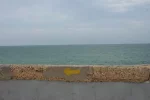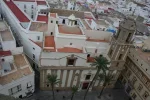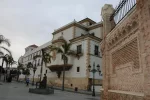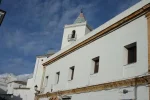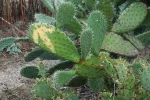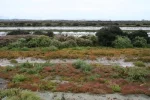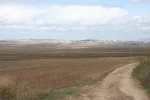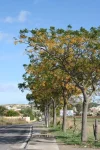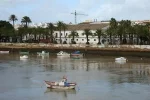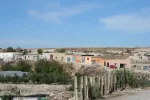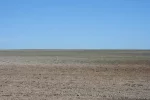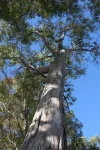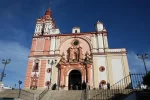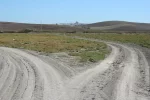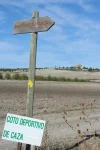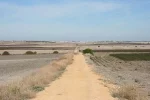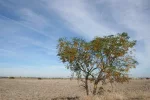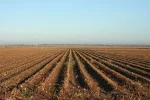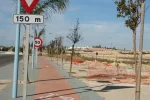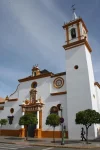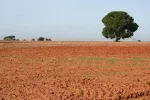lovingkindness
Veteran Member
- Time of past OR future Camino
- .
20 October, 2009. Day One: Cadiz - San Fernando (14 km).
*Left luggage: available at Prado San Sebastian, Seville in the Consigna office. 2 euros per day.
*Credential: Amigos del Santiago de Compostella de Seville. c/ San Jacinto, no. 25, Portal 6. It will take about 55 days or so to reach SdC. One credential has only 40 stamp spaces. I asked for two.
*Transport, Seville to Cadiz: bus from Prado de San Sebastian Bus Station. Ticket office opens at 6.30 am. A direct bus departs at 7 am, cost 11.40 euros. Drop off point is directly outside the old city walls.
http://www.tgcomes.es/horarios_13_english.htm (edited 2016)
*Cadiz tourist office: free inner city centre maps available for Cadiz, San Fernando, Puerto Real and Jerez de la Frontera. Unable to obtain others along the way. The officer was unwilling to book accommodation ahead. I don´t know if it was just this officer or a general rule.
*Google maps: invaluable help along the way, particularly in entering and exiting towns. Not all towns have tourist offices so I was unable to get street maps after Jerez de la Frontera. I relied on Google maps for locating hostals previously searched out. Most of the accommodation listed in the Guia de Cadiz a Seville can be found online. The yellow arrows cease before most towns and start again in the outskirts, sometimes a few kilometres walk from the centre.
*Cadiz sello: Hospital de Mujeres located in a street of the same name, directly behind the covered market beside the Correos. Sello also available at the tourist office.
*Getting started: la Iglesia de Santiago (the altar piece includes a carving of Santiago on a horse). Stand with your back to the church and turn right, to the sea. The first yellow arrow (flechas) is painted on the curb.
*Accommodation: San Fernando, Calle Real. 33 euros for single. Very nice. Next door to a grocery store.
The adventures of a jet-lagged Kiwi, or in other words, how not to begin.
The best advice that I can offer anyone embarking on this great adventure is spend a few hours learning directions in Spanish. Arrive a day early and explore Cadiz at leisure, absorb the ambience, climb a few towers to situate one´s self then start out in a happy, peaceful state. What a pity I didn´t do this myself. Covered in hives, jet-lagged and swooning in the heat I staggered my way around Cadiz searching for an alternative to the tourist office sello. I chased around, was shrugged of by someone at the cathedral and eventually directed to an office where a good man came to my rescue. As well as directing me to the Hospital de Mujeres he read page one of the Guia and told me to always keep the sea to my right. On entering la Iglesia de Santiago I found myself participating in mass. Knowing only 10 words of Spanish, this was a curious experience. When others went forward for the Eucharist I decided to go forward too and ask for a blessing. The elderly priest, gorgeously attired in green & gold, looked at me. Not sure what else to do I blessed myself and he followed suit. Without altering expression or saying a word we choreographed a prier a deux. I don´t know about the priest, but I found it meaningful. He disappeared instantly after mass and that was that.
The forecast was for torrential rain. As it was clear when I arrived I saw an opportunity to avoid getting drenched. After eating lunch on the cathedral steps I headed off from la Iglesia de Santiago walking miles by the sea. In the first few minutes I saw two yellow arrows then after that no more. The Guia map indicates that there is a path along the isthmus to the left of a railway line all the way to San Fernando. I expected an arrow or two to assist me in crossing over to this but there were none (that I could see). All the Spanish words in the Guia jumbled before my eyes and I just couldn´t think. ´Keeping the sea always to my right´ as earlier advised I arrived at a conniption of motorway exits and entrances and couldn´t get across. A cyclist directed me to a foot path and tracks through the dunes to the right of the motorway so this is where I walked for the next 6 km. Half way along the isthmus I came across a military base and the guard indicated that I could continue walking all the way to San Fernando, only from here it was on the outside of the motorway barrier over rubble and all the detritus of Spain. Wetlands were to the right and finally I reached a petrol station where a proper footpath took me eventually to Calle Real and a bed for the night.
Photos to follow.
*Left luggage: available at Prado San Sebastian, Seville in the Consigna office. 2 euros per day.
*Credential: Amigos del Santiago de Compostella de Seville. c/ San Jacinto, no. 25, Portal 6. It will take about 55 days or so to reach SdC. One credential has only 40 stamp spaces. I asked for two.
*Transport, Seville to Cadiz: bus from Prado de San Sebastian Bus Station. Ticket office opens at 6.30 am. A direct bus departs at 7 am, cost 11.40 euros. Drop off point is directly outside the old city walls.
http://www.tgcomes.es/horarios_13_english.htm (edited 2016)
*Cadiz tourist office: free inner city centre maps available for Cadiz, San Fernando, Puerto Real and Jerez de la Frontera. Unable to obtain others along the way. The officer was unwilling to book accommodation ahead. I don´t know if it was just this officer or a general rule.
*Google maps: invaluable help along the way, particularly in entering and exiting towns. Not all towns have tourist offices so I was unable to get street maps after Jerez de la Frontera. I relied on Google maps for locating hostals previously searched out. Most of the accommodation listed in the Guia de Cadiz a Seville can be found online. The yellow arrows cease before most towns and start again in the outskirts, sometimes a few kilometres walk from the centre.
*Cadiz sello: Hospital de Mujeres located in a street of the same name, directly behind the covered market beside the Correos. Sello also available at the tourist office.
*Getting started: la Iglesia de Santiago (the altar piece includes a carving of Santiago on a horse). Stand with your back to the church and turn right, to the sea. The first yellow arrow (flechas) is painted on the curb.
*Accommodation: San Fernando, Calle Real. 33 euros for single. Very nice. Next door to a grocery store.
The adventures of a jet-lagged Kiwi, or in other words, how not to begin.
The best advice that I can offer anyone embarking on this great adventure is spend a few hours learning directions in Spanish. Arrive a day early and explore Cadiz at leisure, absorb the ambience, climb a few towers to situate one´s self then start out in a happy, peaceful state. What a pity I didn´t do this myself. Covered in hives, jet-lagged and swooning in the heat I staggered my way around Cadiz searching for an alternative to the tourist office sello. I chased around, was shrugged of by someone at the cathedral and eventually directed to an office where a good man came to my rescue. As well as directing me to the Hospital de Mujeres he read page one of the Guia and told me to always keep the sea to my right. On entering la Iglesia de Santiago I found myself participating in mass. Knowing only 10 words of Spanish, this was a curious experience. When others went forward for the Eucharist I decided to go forward too and ask for a blessing. The elderly priest, gorgeously attired in green & gold, looked at me. Not sure what else to do I blessed myself and he followed suit. Without altering expression or saying a word we choreographed a prier a deux. I don´t know about the priest, but I found it meaningful. He disappeared instantly after mass and that was that.
The forecast was for torrential rain. As it was clear when I arrived I saw an opportunity to avoid getting drenched. After eating lunch on the cathedral steps I headed off from la Iglesia de Santiago walking miles by the sea. In the first few minutes I saw two yellow arrows then after that no more. The Guia map indicates that there is a path along the isthmus to the left of a railway line all the way to San Fernando. I expected an arrow or two to assist me in crossing over to this but there were none (that I could see). All the Spanish words in the Guia jumbled before my eyes and I just couldn´t think. ´Keeping the sea always to my right´ as earlier advised I arrived at a conniption of motorway exits and entrances and couldn´t get across. A cyclist directed me to a foot path and tracks through the dunes to the right of the motorway so this is where I walked for the next 6 km. Half way along the isthmus I came across a military base and the guard indicated that I could continue walking all the way to San Fernando, only from here it was on the outside of the motorway barrier over rubble and all the detritus of Spain. Wetlands were to the right and finally I reached a petrol station where a proper footpath took me eventually to Calle Real and a bed for the night.
Photos to follow.
Attachments
Last edited:



